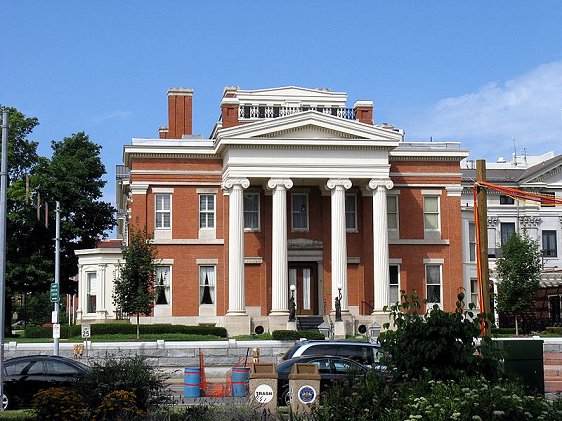Erie is the fourth largest city in Pennsylvania behind Philadelphia, Pittsburgh and Allentown. It is located on the northwestern part of the state facing Lake Erie. Covering 28 sq mi (73 sq km), Erie has a population of 102,000 people (2011 estimate) and a metropolitan population of 281,000 people.
 Erie Club (Charles Manning Reed Mansion, on NRHP), Erie, Pennsylvania
Erie Club (Charles Manning Reed Mansion, on NRHP), Erie, PennsylvaniaSource: https://commons.wikimedia.org/wiki/File:Erie_Club.jpg
Author: Publichall

Erie experiences a humid continental climate. Winters are cold with heavy snow - in fact, it is listed as the 6th snowiest places in the United States. July is the warmest month with average high temperature of 80.4°F (26.9°C). January is the coldest month. That's when the average low temperature drops to 20.3°F (-6.5°C). Snow can be expected from November till March, and can be particularly heavy in December and January.
The history of Erie goes back to the time when the area was part of the Iroquois Confederacy. The French were the first European to arrive in the area. They built Fort Presque Isle in the vicinity in 1753. It 1760 the fort was taken over by the British. In 1789, the Iroquois sold the land to Pennsylvania. The town of Erie was established in 1795. It gained city status in 1851.
Visiting Erie
Erie International Airport (ERI) receives flights from Cleveland, Detroit and Philadelphia. You can reach Erie by taking Interstate 90 from the west, 86 from the east and 79 from the south.Places of Interest in Erie
- Erie Art Museum
Museum holding some 5,000 pieces of art. - Erie Maritime Museum
Museum celebrating maritime history. The brig USS Niagara is usually in docked there. - Firefighter's Historical Museum
Museum on firefighting and its equipment. - Watson-Curtze Mansion
Historic mansion offering a glimpse into the life of the 19th century rich.
 Latest updates on Penang Travel Tips
Latest updates on Penang Travel Tips

Copyright © 2003-2025 Timothy Tye. All Rights Reserved.

 Go Back
Go Back